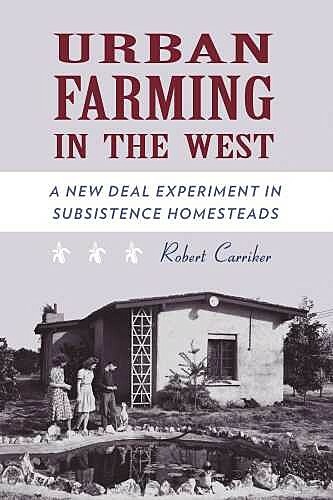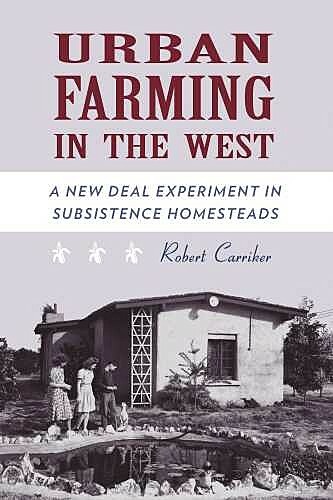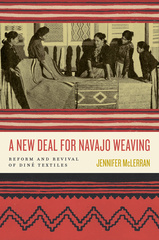Urban Farming in the West
A New Deal Experiment in Subsistence Homesteads
The University of Arizona Press
From 1933 to 1935, the federal government’s Division of Subsistence Homesteads created thirty-four New Deal communities that sought to provide a healthier and more economically secure life for disadvantaged Americans. These settlements were designed to combine the benefits of rural and urban living by offering part-time farming, uplifting social functions, and inexpensive homes. Four were located in the West: in Phoenix, Arizona; El Monte and San Fernando, California; and Longview, Washington.
Robert Carriker examines for the first time the intricate histories of these subsistence homestead projects, which have long been buried in bureaucratic records and clouded by misunderstanding, showing that in many ways they were among the agency’s most successful efforts. He provides case studies of the projects, rescuing their obscure histories using archival documents and rare photographs. He also reveals the machinations of civic groups and private citizens across the West who jockeyed for access to the funds being allotted for New Deal community building.
By describing what took place on these western homesteads, Carriker shows that the DSH’s agenda was not as far-fetched as some have reported. The tendency to condemn the Division and its projects, he argues, has failed to appreciate the good that came from some of the individual homestead communities—particularly those in the Far West.
Although overshadowed by the larger undertakings of the New Deal, some of these western communities remain thriving neighborhoods—living legacies to FDR’s efforts that show how the country once chose to deal with economic hardship. Too often the DSH is noted for its failures; Carriker’s study shows that its western homesteads were instead qualified accomplishments.
Robert Carriker examines for the first time the intricate histories of these subsistence homestead projects, which have long been buried in bureaucratic records and clouded by misunderstanding, showing that in many ways they were among the agency’s most successful efforts. He provides case studies of the projects, rescuing their obscure histories using archival documents and rare photographs. He also reveals the machinations of civic groups and private citizens across the West who jockeyed for access to the funds being allotted for New Deal community building.
By describing what took place on these western homesteads, Carriker shows that the DSH’s agenda was not as far-fetched as some have reported. The tendency to condemn the Division and its projects, he argues, has failed to appreciate the good that came from some of the individual homestead communities—particularly those in the Far West.
Although overshadowed by the larger undertakings of the New Deal, some of these western communities remain thriving neighborhoods—living legacies to FDR’s efforts that show how the country once chose to deal with economic hardship. Too often the DSH is noted for its failures; Carriker’s study shows that its western homesteads were instead qualified accomplishments.
Touching on a range of issues in American history, Carriker's book deserves attention from a range of quarters, including historians of nutrition, the city, and the New Deal.'—H-Urban, H-Net Reviews
“Carriker provides a valuable account of the inner workings of the Urban Homesteads project and treats an interesting variety of personalities involved in the story.” —Richard W. Etulain, author of Does the Frontier Experience Make America Exceptional?
Robert Carriker is head of the History and Geography Department and director of Public History Studies at the University of Louisiana at Lafayette.
Acknowledgments
Introduction
1 Back-to-the-Land + Urban Plight ÷ Part-Time Farming = New Deal Subsistence Homesteading
2 Organizing the Division of Subsistence Homesteads
3 The Western Projects of the Division of Subsistence Homesteads
4 The Phoenix Homesteads
5 The El Monte and San Fernando Homesteads
6 The Longview Homesteads
7 Conclusion
Appendix A. Documenting the Homesteads in Photographs
Appendix B. Projects Approved and Built by the Division of Subsistence Homesteads
Notes
Bibliography
Index






